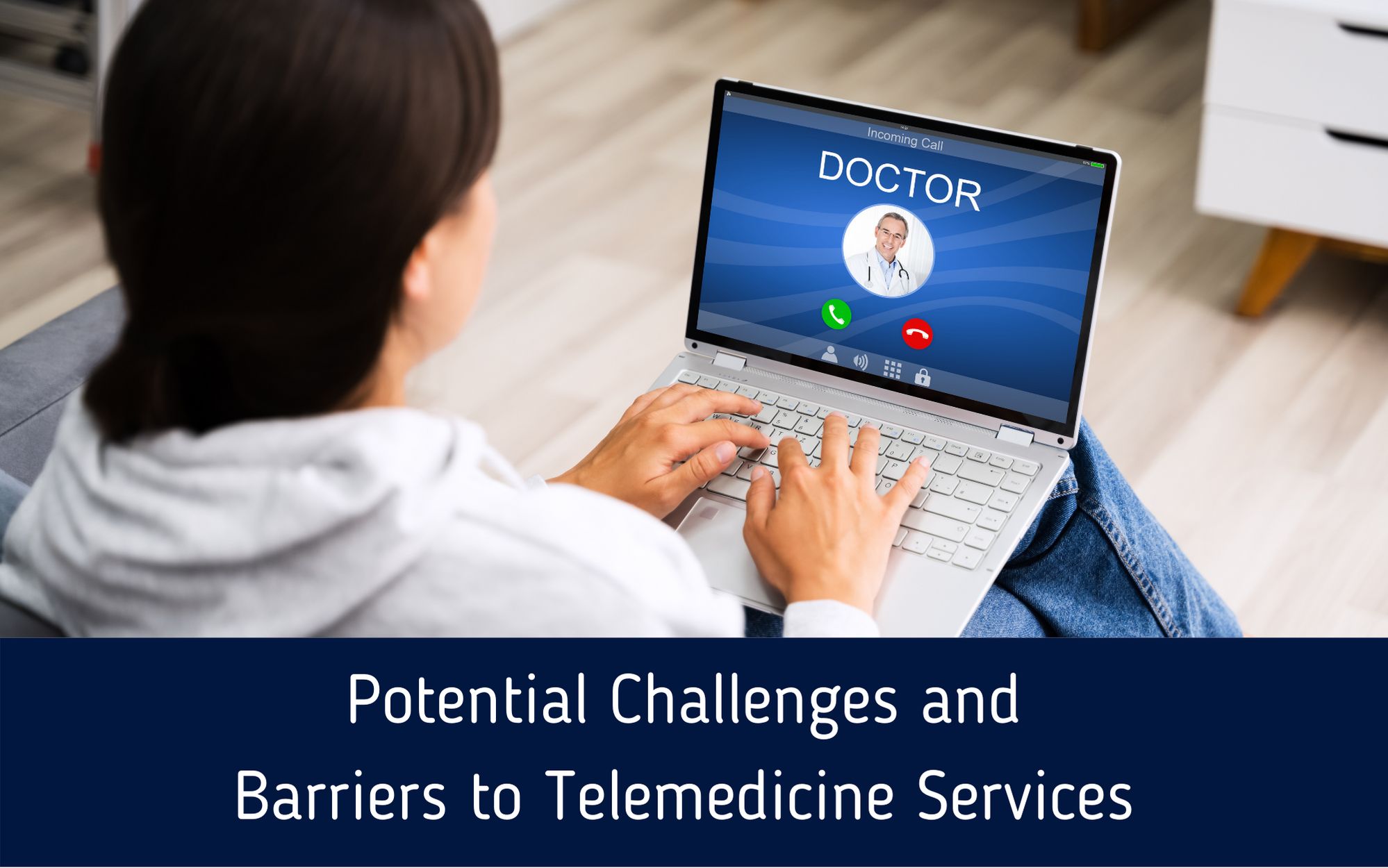Telemedicine and the COVID-19 Pandemic

Open article published on MedShr: 8th January 2021
Last updated: 8th January 2021
Every effort has been made to ensure that the information contained in this article is accurate and current at time of publication, but if you notice an error please contact covid@medshr.net and we will aim to address this. Please find MedShr’s full terms of service here.
Telemedicine has played a pivotal role in maintaining essential health services during the COVID-19 pandemic whilst protecting patients and healthcare providers from risks of in-person interactions.[1, 2] The acceleration in uptake of digital healthcare technologies during the pandemic has been dramatic, and a discussion about whether telemedicine is here to stay is starting to emerge.[3]
Various definitions exist for telemedicine, which is often used interchangeably with telehealth, although some authors draw distinctions between the two terms.[2, 4] An article by Tuckson et al. in the New England Journal of Medicine (2017) [5] defines telemedicine, or telehealth, as:
“the use of medical information that is exchanged from one site to another through electronic communication to improve a patient’s health” [5]
This electronic communication (or information and communications technology, ICT) can include interactions by “phone, instant messaging, video, text message, or web-based services”, and can be synchronous (‘real time’) or asynchronous.[6]
Reports by the World Health Organization on eHealth have emphasised the central role digital health solutions are likely to play in ultimately achieving universal health coverage.[7, 8] In low-resource settings, the potential for telemedicine to not only maintain essential services but also expand access to and strengthen existing services for underserved populations is being evaluated.[8] Indeed, during the pandemic, some authors have highlighted the possibility of utilising existing mobile technologies in low- and middle-income countries to help strengthen the public health response to the COVID-19 outbreak.[9]
Current and Potential Future Opportunities for Telemedicine
Globally, but especially in low- and middle-income countries (LMICs), the possibility for telemedicine services to reduce the geographical barriers for patients in remote locations to access healthcare is significant.[7, 8] These services can also increase access to specialists who might otherwise not be available in that region, thus providing support to empower healthcare providers serving populations in more remote locations. Examples where this has worked effectively have been demonstrated in the field of ophthalmology [10], and research is exploring the effectiveness of telehealth approaches in other fields including psychology and psychiatry.[11]
Telemedicine services could also reduce the travel burden more generally for patients who might find frequent visits to healthcare facilities for face-to-face appointments both financially burdensome and challenging due to the nature of their health. Both during and after the pandemic, telemedicine may be able to address some of these issues, especially for patients with chronic health conditions living in LMICs.[12]
In addition to providing a greater degree of convenience and flexibility for patients, some authors have considered whether remote consultations may allow for increasing continuity of care in primary care settings, and possibly allow for longer appointments.[13] However, further analysis is required to fully understand the impact of increasing remote consultations and the need for subsequent in-person reviews.[14]
In addition to supporting patient-to-professional communications, telemedicine solutions may also be beneficial for supporting communication and training among healthcare professionals.[15] One emerging application of telemedicine in this way is surgical telementoring, whereby a surgical trainer with expertise in a particular area can remotely support and guide another surgical team performing surgical procedures at a different location.[16, 17] With the likelihood of telemedicine services being increasingly integrated into mainstream healthcare, as discussed below, it will be important that education and training curricula are updated to incorporate modules on using this technology.[15]

Potential Barriers to Implementing Telemedicine to Routine Healthcare
Whilst the potential benefits of telemedicine, especially in low-resource settings, could be substantial, there are still a wide variety of barriers to integrating telemedicine into routine healthcare globally.[7, 8] However, the sudden surge in requirement for healthcare services to adopt virtual technologies during the COVID-19 pandemic is likely to highlight barriers and accelerate solutions to overcoming these challenges.[2, 18] Some of these barriers or challenges include:
Practical limitations: performing a physical examination remains an important aspect of many clinical encounters, and although it may be possible to perform certain aspects via a telemedicine platform [19], certain examination mediums such as auscultation are not possible. A survey of healthcare professionals during the COVID-19 pandemic also suggested that clinicians are more concerned about missing a diagnosis during a remote consultation.[20] The use of telemedicine peripheral devices such as electronic stethoscopes or video-otoscopes may help provide a solution to some of these issues [21, 22], but the cost of implementing such technology could be a barrier in itself. Discussing sensitive topics or communicating information about serious illness with patients and their relatives through virtual consultations is also challenging, and an editorial in the Annals of Internal Medicine has explored how healthcare professionals can try to address these challenges to ensure it is still possible to communicate empathetically in these scenarios.[23]
Resource Constraints: One commonly cited barrier to implementing telemedicine is the set-up costs for establishing these services.[8] Upgrading infrastructure to support telemedicine use may require not only improvements to ICT equipment in healthcare settings, but also improving broadband access for the communities of patients who would be able to engage with the telemedicine services. Designing, implementing and operating these telemedicine services also requires a team with technical expertise in this field.[7, 8] In designing and implementing upgrades to infrastructure, especially in low resource settings, one approach might be to ensure the infrastructure improvements could also support other services in addition to telemedicine, such as supporting tele-education for schools in more remote settings.[8]
Accessibility for Patients: Research performed during the COVID-19 pandemic has highlighted that, whilst telemedicine may provide an invaluable approach for widening access to healthcare, there is also the potential risk of perpetuating inequalities in access to healthcare for certain populations of patients through the ‘digital divide’.[24, 25] Further work is required to examine why differences in access and use of telemedicine during the pandemic exist between different patient demographics - specifically considering the impact of both technical barriers (such as access to the required technology) and patients factors (such as concerns about privacy, or being less accepting of telemedicine).[19, 24] For widespread adoption of telemedicine, varied approaches and designs will likely be required to ensure that the needs of different populations can be met; for example, considering approaches that could facilitate the use of telemedicine for people living in long-term care facilities.[26] Establishing which barriers or challenges to telemedicine use may exist for different patient demographics would allow approaches to be adopted to ensure current and future planning for telemedicine services are designed to meet the needs of all patients.[24, 25]
Regulatory, legal and ethical challenges: implementing telemedicine programmes, especially cross-border services, poses a large number of questions relating to the processes for regulation of these services, and a full discussion of this is beyond the scope of this article.[4, 5] To allow for rapid expansion of these services during the COVID-19 pandemic, various regulations related to telemedicine were relaxed [22], but it is clear that for telemedicine to be established as a regular component in future healthcare services, comprehensive legal frameworks and regulatory guidance will be required to support adoption of these services.[4] Whilst telemedicine may increase accessibility to healthcare, it is also essential that the technology and regulations ensure protection of patient privacy and confidentiality is central to the design of telemedicine services.[1, 8]
Education for healthcare professionals and students: communication skills are a key component of medical education, and current undergraduate and postgraduate healthcare courses dedicate significant resources to training healthcare professionals in these skills. With increasing use of telemedicine for virtual consultations and communications, authors have highlighted the importance of integrating training in communication skills in these settings into healthcare curricula.[2, 18] Pilot courses dedicated to these skills - colloquially termed ‘web-side manner’ - have been trialled, aiming to provide students with skills to perform remote physical examinations, and teach skills specific for telemedicine.[18]
Conclusion
This article has aimed to provide a brief reflection on the potential benefits and challenges presented by the increased use of telemedicine during the COVID-19 pandemic. During the pandemic and in the future it will be important that appropriate support and funding is provided to ensure telemedicine solutions are not only restricted to high-resource settings, and to also guarantee implementation of these services does not limit access for underserved populations.[2, 24] Authors have already begun to consider how experiences gained from the widespread uptake of telemedicine during the COVID-19 pandemic may be maintained and utilised following the pandemic [1, 2, 27], and to also consider how future telemedicine systems may help strengthen capacity to respond to a future global health crisis.[3, 28]
Useful Resources:
World Health Organization: Global Observatory for eHealth
General Medical Council (UK): Remote consultations
Annals of Internal Medicine: The New Normal: Key Considerations for Effective Serious Illness Communication Over Video or Telephone During the Coronavirus Disease 2019 (COVID-19) Pandemic
Royal College of General Practitioners: General practice in the post Covid world - Challenges and opportunities for general practice
Continue the Discussion:
Join the COVID-19 discussion groups for healthcare professionals on MedShr:




References:
[1] Wosik J, Fudim M, Cameron B, Gellad ZF, Cho A, Phinney D, Curtis S, Roman M, Poon EG, Ferranti J, Katz JN, Tcheng J. Telehealth transformation: COVID-19 and the rise of virtual care. J Am Med Inform Assoc. 2020 Jun 1;27(6):957-962. doi: 10.1093/jamia/ocaa067. PMID: 32311034; PMCID: PMC7188147.
[2] Doraiswamy S, Abraham A, Mamtani R, Cheema S. Use of Telehealth During the COVID-19 Pandemic: Scoping Review. J Med Internet Res. 2020 Dec 1;22(12):e24087. doi: 10.2196/24087. PMID: 33147166; PMCID: PMC7710390.
[3] Smith AC, Thomas E, Snoswell CL, Haydon H, Mehrotra A, Clemensen J, Caffery LJ. Telehealth for global emergencies: Implications for coronavirus disease 2019 (COVID-19). J Telemed Telecare. 2020 Jun;26(5):309-313. doi: 10.1177/1357633X20916567. Epub 2020 Mar 20. PMID: 32196391; PMCID: PMC7140977.
[4] Hyder MA, Razzak J. Telemedicine in the United States: An Introduction for Students and Residents. J Med Internet Res. 2020 Nov 24;22(11):e20839. doi: 10.2196/20839. PMID: 33215999; PMCID: PMC7690251.
[5] Tuckson RV, Edmunds M, Hodgkins ML. Telehealth. N Engl J Med. 2017 Oct 19;377(16):1585-1592. doi: 10.1056/NEJMsr1503323. PMID: 29045204.
[6] Cochrane Special Collections. Coronavirus (COVID-19): remote care through telehealth [internet]. Updated 2021 Jan 6. Available from: https://www.cochranelibrary.com/collections/doi/SC000043/full (Accessed 7th January 2021)
[7] World Health Organization. Global difusion of eHealth: making universal health coverage achievable. Report of the third global survey on eHealth. Geneva: World Health Organization; 2016. Licence: CC BY-NC-SA 3.0 IGO.
[8] WHO Global Observatory for eHealth. Telemedicine: opportunities and developments in Member States: report on the second global survey on eHealth. World Health Organization. 2010. Available from: https://apps.who.int/iris/handle/10665/44497
[9] Verhagen LM, de Groot R, Lawrence CA, Taljaard J, Cotton MF, Rabie H. COVID-19 response in low- and middle-income countries: Don't overlook the role of mobile phone communication. Int J Infect Dis. 2020 Oct;99:334-337. doi: 10.1016/j.ijid.2020.07.069. Epub 2020 Aug 4. PMID: 32763447; PMCID: PMC7402274.
[10] Al-Khaled T, Cole ED, Chan RVP. Telemedicine, Telementoring, and Technology: Improving Patient Outcomes and Access to Care in Low and Middle-Income Countries. Ophthalmology. 2021 Jan;128(1):138-139. doi: 10.1016/j.ophtha.2020.10.014. PMID: 33349339.
[11] Fu Z, Burger H, Arjadi R, Bockting CLH. Effectiveness of digital psychological interventions for mental health problems in low-income and middle-income countries: a systematic review and meta-analysis. Lancet Psychiatry. 2020 Oct;7(10):851-864. doi: 10.1016/S2215-0366(20)30256-X. Epub 2020 Aug 28. PMID: 32866459; PMCID: PMC7455253.
[12] Hoffer-Hawlik MA, Moran AE, Burka D, Kaur P, Cai J, Frieden TR, Gupta R. Leveraging Telemedicine for Chronic Disease Management in Low- and Middle-Income Countries During Covid-19. Glob Heart. 2020 Sep 15;15(1):63. doi: 10.5334/gh.852. PMID: 33150128; PMCID: PMC7500231.
[13] Gray DP, Freeman G, Johns C, Roland M. Covid 19: a fork in the road for general practice. BMJ. 2020 Sep 28;370:m3709. doi: 10.1136/bmj.m3709. PMID: 32988832.
[14] Salisbury C, Murphy M, Duncan P. The Impact of Digital-First Consultations on Workload in General Practice: Modeling Study. J Med Internet Res. 2020 Jun 16;22(6):e18203. doi: 10.2196/18203. PMID: 32543441; PMCID: PMC7327596.
[15] Jumreornvong O, Yang E, Race J, Appel J. Telemedicine and Medical Education in the Age of COVID-19. Acad Med. 2020 Dec;95(12):1838-1843. doi: 10.1097/ACM.0000000000003711. PMID: 32889946; PMCID: PMC7489227.
[16] Erridge S, Yeung DKT, Patel HRH, Purkayastha S. Telementoring of Surgeons: A Systematic Review. Surg Innov. 2019 Feb;26(1):95-111. doi: 10.1177/1553350618813250. Epub 2018 Nov 22. PMID: 30465477.
[17] El-Sabawi B, Magee W 3rd. The evolution of surgical telementoring: current applications and future directions. Ann Transl Med. 2016 Oct;4(20):391. doi: 10.21037/atm.2016.10.04. PMID: 27867943; PMCID: PMC5107399.
[18] Mulcare M, Naik N, Greenwald P, Schullstrom K, Gogia K, Clark S, Kang Y, Sharma R. Advanced Communication and Examination Skills in Telemedicine: A Structured Simulation-Based Course for Medical Students. MedEdPORTAL. 2020 Dec 17;16:11047. doi: 10.15766/mep_2374-8265.11047. PMID: 33365390; PMCID: PMC7751329.
[19] Julien HM, Eberly LA, Adusumalli S. Telemedicine and the Forgotten America. Circulation. 2020 Jul 28;142(4):312-314. doi: 10.1161/CIRCULATIONAHA.120.048535. Epub 2020 Jun 11. PMID: 32525712; PMCID: PMC7382527.
[20] Medical Protection Society. 4 in 5 doctors concerned some patients will get left behind if telemedicine increases post Covid-19 [internet]. 2020 Dec 16. Available from: https://www.medicalprotection.org/uk/articles/4-in-5-doctors-concerned-patients-will-get-left-behind-post-covid
[21] Weinstein RS, Krupinski EA, Doarn CR. Clinical Examination Component of Telemedicine, Telehealth, mHealth, and Connected Health Medical Practices. Med Clin North Am. 2018 May;102(3):533-544. doi: 10.1016/j.mcna.2018.01.002. PMID: 29650074.
[22] Marin A. Telemedicine takes center stage in the era of COVID-19. Science: Technology Feature. 2020 Nov 6. Available from: https://www.sciencemag.org/features/2020/11/telemedicine-takes-center-stage-era-covid-19
[23] Flint L, Kotwal A. The New Normal: Key Considerations for Effective Serious Illness Communication Over Video or Telephone During the Coronavirus Disease 2019 (COVID-19) Pandemic. Ann Intern Med. 2020 Sep 15;173(6):486-488. doi: 10.7326/M20-1982. Epub 2020 May 14. PMID: 32422084; PMCID: PMC7236893.
[24] Eberly LA, Kallan MJ, Julien HM, et al. Patient Characteristics Associated With Telemedicine Access for Primary and Specialty Ambulatory Care During the COVID-19 Pandemic. JAMA Netw Open. 2020;3(12):e2031640. doi:10.1001/jamanetworkopen.2020.31640
[25] Tam S, Wu VF, Williams AM, Girgis M, Sheqwara JZ, Siddiqui F, Chang SS. Disparities in the Uptake of Telemedicine During the COVID-19 Surge in a Multidisciplinary Head and Neck Cancer Population by Patient Demographic Characteristics and Socioeconomic Status. JAMA Otolaryngol Head Neck Surg. 2020 Nov 5:e203052. doi: 10.1001/jamaoto.2020.3052. Epub ahead of print. PMID: 33151289; PMCID: PMC7645752.
[26] Seifert A, Batsis JA, Smith AC. Telemedicine in Long-Term Care Facilities During and Beyond COVID-19: Challenges Caused by the Digital Divide. Front Public Health. 2020 Oct 26;8:601595. doi: 10.3389/fpubh.2020.601595. PMID: 33194999; PMCID: PMC7649197.
[27] Bashshur R, Doarn CR, Frenk JM, Kvedar JC, Woolliscroft JO. Telemedicine and the COVID-19 Pandemic, Lessons for the Future. Telemed J E Health. 2020 May;26(5):571-573. doi: 10.1089/tmj.2020.29040.rb. Epub 2020 Apr 8. PMID: 32275485.
[28] Bhaskar S, Bradley S, Sakhamuri S, Moguilner S, Chattu VK, Pandya S, Schroeder S, Ray D, Banach M. Designing Futuristic Telemedicine Using Artificial Intelligence and Robotics in the COVID-19 Era. Front Public Health. 2020 Nov 2;8:556789. doi: 10.3389/fpubh.2020.556789. PMID: 33224912; PMCID: PMC7667043.
Article by Dr Ryan Broll, MedShr Open Editorial Team, Medical Education Fellow
Loading Author...
Sign in or Register to comment